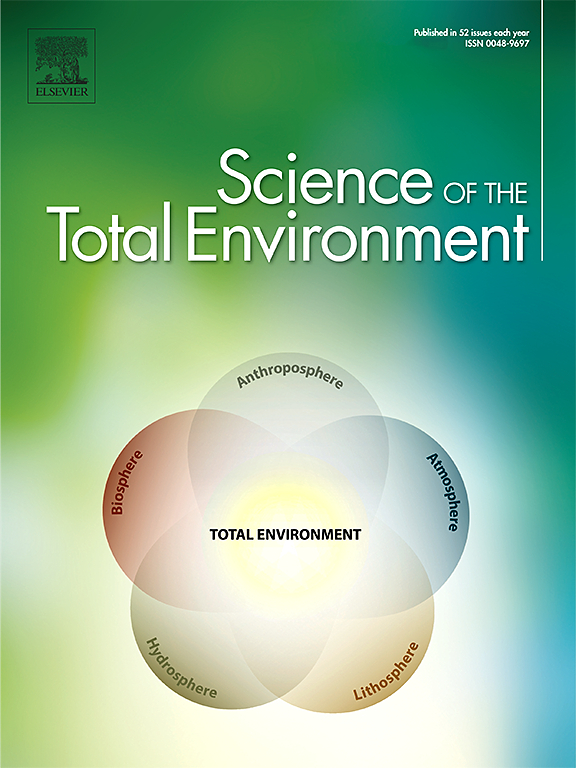Predator-mediated nutrient transfers and recycling in ecosystems: Fine-scale variation in the contribution of Antarctic fur seals (Arctocephalus gazella) on and around the Kerguelen Islands
IF 8.2
1区 环境科学与生态学
Q1 ENVIRONMENTAL SCIENCES
引用次数: 0
Abstract
Waters on the Kerguelen Plateau are characterised by a high productivity and unique nutrient dynamics compared to the surrounding Southern Ocean. They support large populations of amphibious marine predators such as seabirds and marine mammals, which participate in nutrient recycling at sea and nutrient transfers from sea to land on their colonies. This study investigates the contribution of Antarctic fur seals (Arctocephalus gazella) to the biological recycling of 15 essential and 5 non-essential nutrients on and around the Kerguelen Islands during their four-month breeding season. Nutrient concentrations of 59 fur seal scats from two colonies were examined and used to determine faecal nutrient output from lactating females using a bioenergetic model. We evidenced individual variability in the multi-nutrient composition of fur seal scats, with different types of potential fertilisers. Colony differences in scat compositions resulted in multi-nutrient release levels that did not simply reflect colony abundances. This suggests that estimating predators' nutrient release based on averages (diets, prey or faecal nutrient contents) likely overlooks important fine-scale spatial variability in their contributions. Collectively, fur seals deposit up to 628 kg (95 % CI [548–710]) of phosphorus (limiting on land), 46.4 [39.8–53.2] kg of iron (limiting at sea), and 5.9 [5.2–6.8] g of lead (toxic to most organisms). At sea, fur seal defecation could trigger locally significant enrichment events. On land, fur seal faecal nutrient deposition is spatially concentrated in coastal colonies where phosphorus deposition is in the range of global crop fertiliser use. We argue that the role of marine predators in the local nutrient dynamics of the Kerguelen area should not be overlooked, and that fine-scale variability in the nutrient input by such marine predators is important to consider in any local nutrient dynamic study.

求助全文
约1分钟内获得全文
求助全文
来源期刊

Science of the Total Environment
环境科学-环境科学
CiteScore
17.60
自引率
10.20%
发文量
8726
审稿时长
2.4 months
期刊介绍:
The Science of the Total Environment is an international journal dedicated to scientific research on the environment and its interaction with humanity. It covers a wide range of disciplines and seeks to publish innovative, hypothesis-driven, and impactful research that explores the entire environment, including the atmosphere, lithosphere, hydrosphere, biosphere, and anthroposphere.
The journal's updated Aims & Scope emphasizes the importance of interdisciplinary environmental research with broad impact. Priority is given to studies that advance fundamental understanding and explore the interconnectedness of multiple environmental spheres. Field studies are preferred, while laboratory experiments must demonstrate significant methodological advancements or mechanistic insights with direct relevance to the environment.
 求助内容:
求助内容: 应助结果提醒方式:
应助结果提醒方式:


